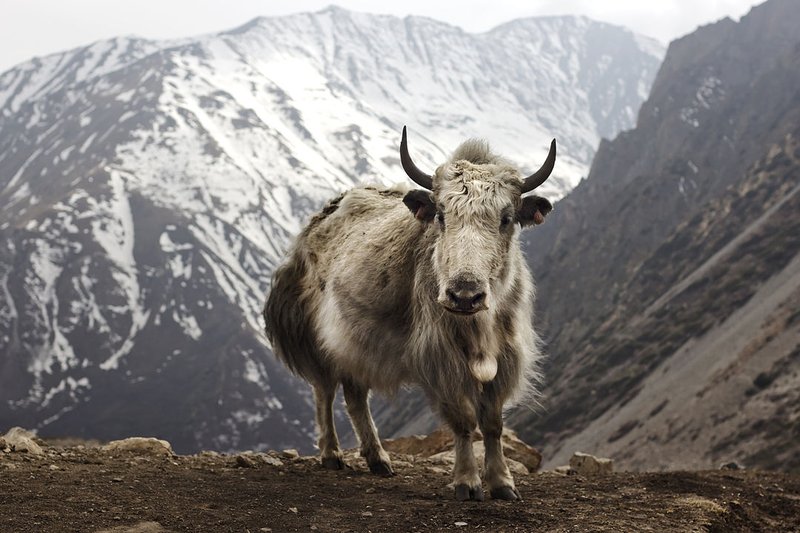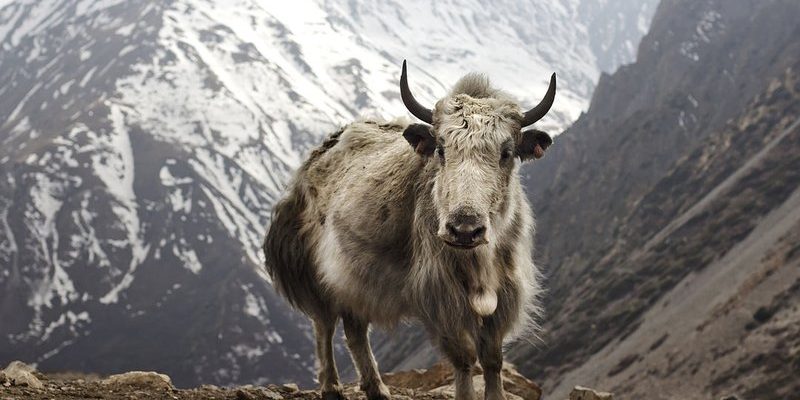
Imagine yaks as the mountain’s gentle giants. They’ve adapted to life where the air is thin, and the temperatures can drop drastically. They play a crucial role in the ecosystem, from providing milk and meat to helping local communities with transportation. However, as climate change and human activities disrupt their habitats, the future of yaks hangs in the balance. In this article, we’ll explore whether yaks are classified as endangered, the factors affecting their populations, and the global efforts to protect these magnificent animals.
Understanding Yak Populations
Let’s start by understanding what we mean when we talk about yak populations. The domestic yak, or *Bos grunniens*, is the species we see most often. These animals are commonly found in Tibet, Nepal, and Bhutan. However, there are also wild counterparts, like the Tibetan wild yak (*Bos mutus*), which are less common and are actually the ones we need to worry about more when discussing endangerment.
You might be wondering how many yaks are out there. Estimates suggest that there are about 14 million domestic yaks globally, which sounds like a lot. But keep in mind that the wild yak population is much smaller, with numbers dwindling due to habitat loss and poaching.
Current Conservation Status
So, is the yak endangered? The answer varies depending on which type you’re talking about. The domestic yak is not considered endangered, thanks to its large population and usefulness to humans. However, the wild yak is classified as vulnerable by the International Union for Conservation of Nature (IUCN).
Why the difference? Well, wild yaks face severe threats from habitat destruction and hybridization with domestic yaks. Imagine trying to survive in a world where your home is rapidly being turned into farmland. That’s the reality for these wild yaks, making conservation efforts crucial.
Threats to Yak Populations
Several factors are putting yaks at risk, especially the wild variety. Here’s a rundown of the main threats:
- Habitat Loss: As humans expand their agricultural lands, wild yak habitats are disappearing.
- Climate Change: Rising temperatures and unpredictable weather patterns are affecting food sources and living conditions.
- Hybridization: Breeding with domestic yaks can dilute the wild population’s genetic diversity, threatening its survival.
- Poaching: Wild yaks are hunted for their fur and meat, further decreasing their population.
These challenges are like roadblocks on a path to survival. Conservationists are working hard to remove or mitigate these obstacles.
Conservation Efforts Around the Globe
Across the globe, numerous initiatives focus on yak conservation. These efforts are essential for maintaining the delicate balance between humans and wildlife. Let’s look at some key strategies:
Protected Areas
Creating protected areas is one of the most effective methods to safeguard wild yak populations. National parks and reserves are established to create safe havens for yaks to thrive without human interference. For example, the Qomolangma National Nature Preserve in Tibet plays a vital role in protecting the habitats of various high-altitude species, including the wild yak.
Community Involvement
Local communities are on the front lines of conservation. When they are engaged in protecting their environment, the results can be powerful. Many organizations are focusing on educating farmers about the importance of preserving wild yaks and their habitats. By involving them in conservation efforts, they can find ways to coexist with these animals.
Breeding Programs
To address the risks of hybridization, some conservationists are also implementing breeding programs for wild yaks. The goal is to increase their numbers in a controlled environment. This way, they can help bolster the wild population while keeping their genetic integrity intact.
Why Protecting Yaks Matters
You might be asking why we should care about yaks and their conservation. Honestly, yaks aren’t just important for their own sake. They play a significant role in their ecosystems, helping maintain the balance of their habitats. Their grazing habits can actually help promote the growth of various plant species, which supports other wildlife.
Moreover, yaks are a cornerstone for many communities. They provide food, clothing, and labor. Protecting yaks means preserving the cultural heritage of people who rely on them, like the nomadic herders of Tibet.
How You Can Help
Getting involved in yak conservation may seem daunting, but there are several ways you can make a difference:
- Raise Awareness: Spread the word about yak conservation. Share articles, posts, or documentaries to educate others.
- Support Eco-friendly Brands: Choose products that promote sustainable practices and support local communities reliant on yaks.
- Volunteer: Look for organizations that focus on wildlife conservation and offer your time or skills.
Every little bit counts when it comes to conservation efforts. You can be part of the solution.
In summary, while domestic yaks are not endangered, the wild yak population certainly is facing tough times. Understanding the challenges they encounter and the ongoing conservation efforts helps us appreciate why protecting these incredible animals matters. As we continue to navigate the balance between human needs and wildlife preservation, yaks remind us of the rich tapestry of life we must strive to protect.
So next time you think about yaks, remember they’re more than just a part of breathtaking landscapes. They symbolize resilience and the need for thoughtful stewardship of our planet. By coming together to support yak conservation, we can ensure future generations will continue to admire these incredible animals.

